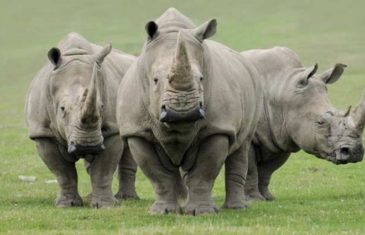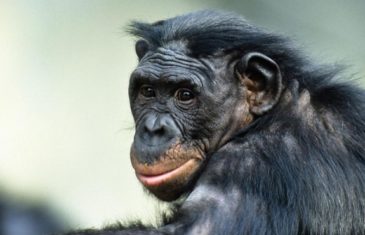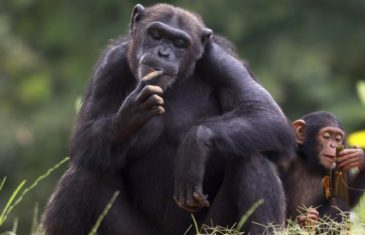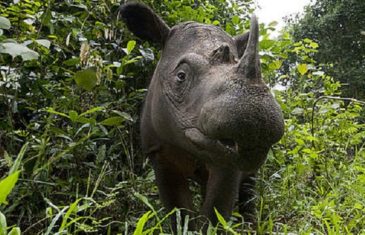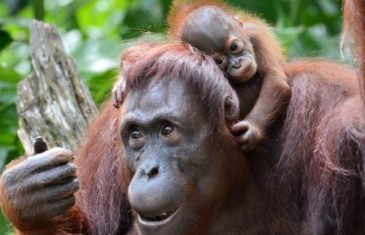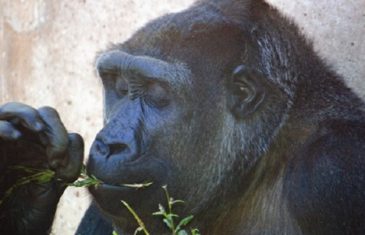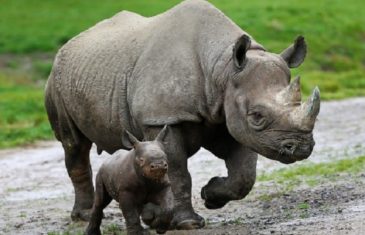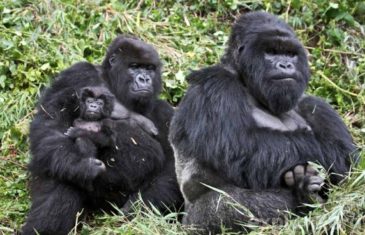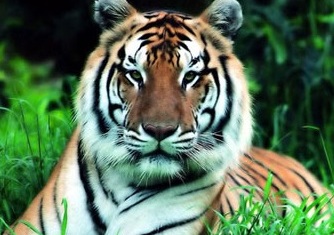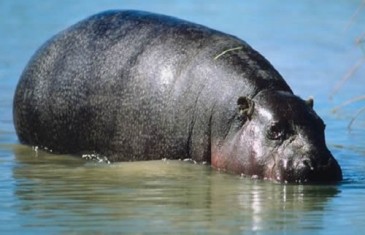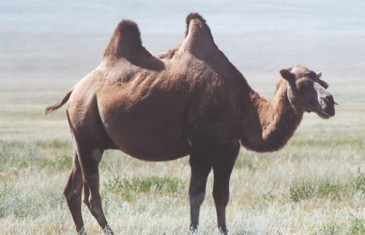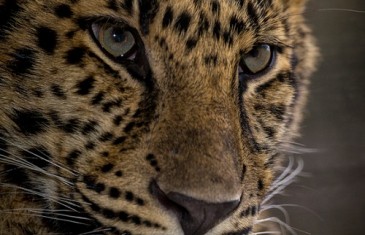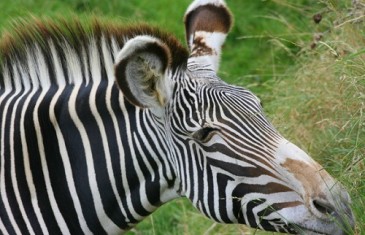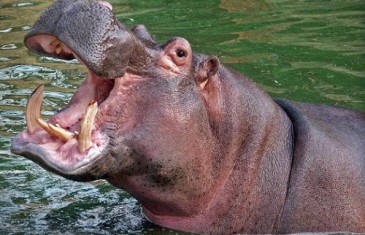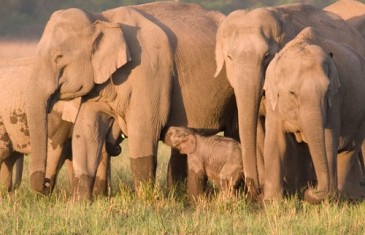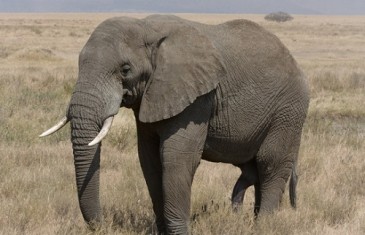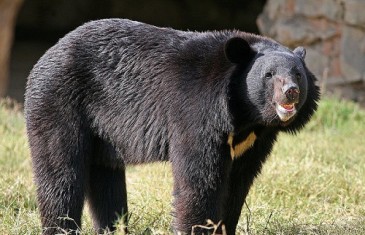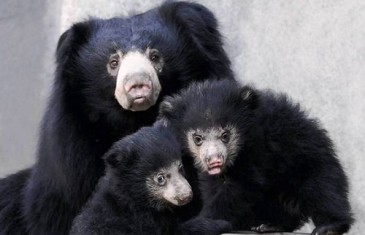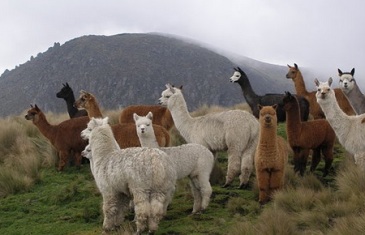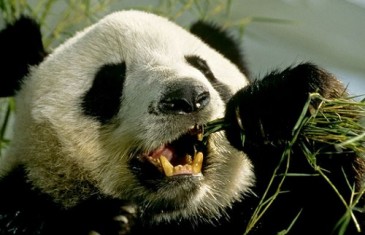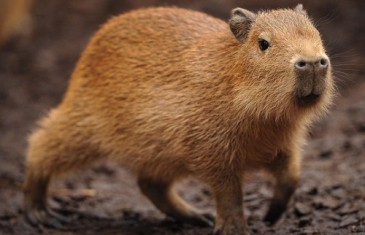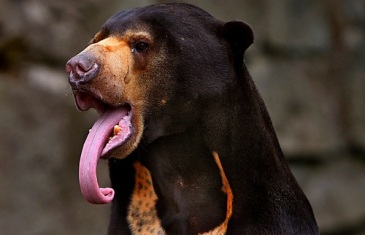Did you know? There are only 3 Northern white rhinos left in the world. They live in a private sanctuary in Kenya. One of them is a male and two are female. Neither female is capable of natural reproduction. There are two subspecies of the White Rhino; the Northern white rhino which is and extinct […]
Read moreInteresting Facts The last common ancestor of today’s apes and humans lived about 18 million years ago. Humans and Pan (chimps and bonobos) diverged 5 to 8 million years ago. One explanation for the genetic separation between bonobos and is the formation of the Congo River about 1.5 million years ago which divided the population preventing […]
Read moreInteresting Facts Genetic studies show that chimpanzees and humans share a common ancestor and 98% of genes. Because we are so similar chimpanzees get many infectious diseases that humans get. Chimps belong to the group of greater apes along with gorillas, bonobos and . They are stronger than humans because of the way neurons activate […]
Read moreInteresting Facts A calf born in the Cincinnati Zoo in Ohio was the first Sumatran Rhinoceros born in captivity in over 100 years. There are fewer than 250 Sumatran Rhinoceros in the wild, they are so endangered that they are one of the rarest large mammals in the world. There are five types of rhinoceros: […]
Read moreInteresting Facts The two species of orangutan, Sumatran Orangutan (pongo abelii) and Borneo Orangutan (pongo pygmaeus), genetically diverged about 1.5 million years ago. Orangutans have 32 teeth, the same amount as humans. It is believed that humans and apes had a common ancestor 15 million years ago. They share 97% of their DNA with humans. Orangutans are […]
Read moreInteresting Facts about Gorillas Gorillas develop twice as fast as humans. Gorillas share 95% of our human genome. A group of gorillas is called troop. The Western Lowland Gorilla is the subspecies that is often found in zoos. American zoologist George B. Schaller was the first scientist to study and observe gorillas. He published […]
Read moreKingdom Phylum Class Order Family Genus Species Animalia Chordata Mammalia Perissodactyla Rhinocerotidae Diceros D. bicornis o o Conservation The IUCN Red List of Threatened Species lists the Black Rhino as Critically Endangered. The species is listed on CITES Appendix I. International trade in Black Rhinos and their products is prohibited. Fun Facts about Rhinos […]
Read moreInteresting Facts about Gorillas Gorillas are our closest relatives. They share 98% of our genome. American zoologist George B. Schaller was the first scientist to study and observed gorillas. He published his findings in his book “The Mountain Gorilla: Ecology and Behavior” Taxonomy Kingdom: Animalia Phylum: Chordata Class: Mammalia Order Primates Suborder: Haplorhini Family: […]
Read morePopulation and Conservation Status The South China Tiger is the most critically endangered species of tiger in the world. There are about two dozen in world in reserves in China and South Africa. According to the International Union for the Conservation of Nature this subspecies may be functionally extinct as it has not been observed […]
Read moreTaxonomy Kingdom: Animal Phylum: Chordata Class: Mammalia Order: Artiodactyla Family: Hippopotamidae Genus: Choeropsis Species: Choeropsis liberiensis o o 0 Population The IUCN estimates a population of less than 3,000 individuals with a projected decline of 20% over the next 20 years. Name Scientific name: Hexaprotodon liberiensis or Choeropsis liberiensis. Choeropsis from the Greek “having the […]
Read morePopulation According to the IUCN as of 2004 there were 600 wild Bactrian camels in China and 350 in Mongolia. Population trend is decreasing. Name Scientific name: Camelus ferus. Camelus from the Latin camelus and the Greek Kamelos for “camel”. Ferus from the Greek word ferus meaning “savage” or “wild”. Common name: Mongolian wild camel, wild […]
Read moreTaxonomy Kingdom Phylum Class Order Family Genus Species Animalia Chordata Mammalia Carnivora Felidae Panthera Panthera pardus o o Name Scientific name: Panthera pardus. Panthera is derived from the Latin word panthera or the Greek word panther meaning “panther, leopard”. Pardus is derived from the Latin pardus or from the Greek pardos meaning “male panther”. Common […]
Read moreName Scientific name: Equus grevyi. The word equus is from the Latin word for “horse”. This species was named Grevyi after Jules Grèvy, president of the Third Republic of France in the late 18th century who was given one of these zebras as a gift in 1882. Common name: Grevy’s zebra, Imperial zebra. The word […]
Read moreTaxonomy Kingdom: Animalia Phylum: Chordata Class: Mammalia Order: Artiodactyla Family: Hippopotamidae Genus: Hippopotamus Species: Hippopotamus amphibious 0 0 Name Common name: Common hippopotamus, river hippopotamus, Nile Hippopotamus, large hippo. Scientific name: Hippopotamus amphibious. Hippos from the Greek word “horse”, potamos from the Greek “river or rushing water”. Physical Features The common or river hippopotamus is […]
Read moreo o Conservation Status The Asian elephant is listed under Appendix I of CITES. The Asian elephant is listed as “endangered’ in the IUCN Red List of Threatened Species. Its population has declined by more than 50% over the last 45 years. The subspecies Sumatran elephant (Elephas maximus sumatranus) is listed as “critically endangered”. It […]
Read moreName Common name: African Scientific name: Loxodonta africana Physical Features African elephants are the largest and heaviest on earth. They have larger ears than the and they are shaped like the continent of Africa. Each ear can measure 4 ft or 1.2 m across. Their large ears are used to control their body temperature. They […]
Read moreTaxonomy Kingdom Phylum Class Order Family Genus Species Animalia Chordata Mammalia Carnivora Ursidae Ursus Ursus thibetanus 0 0 Name Common Name: Asiatic black bear, Asian black bear, Himalayan Black bear, Tibetan black bear, moon bear. Scientific Name: Ursus thibetanus Distribution and Habitat The Asiatic black bear has a wide distribution. Its range covers southeastern Iran, […]
Read moreTaxonomy Kingdom Phylum Class Order Family Genus Species Animalia Chordata Mammalia Carnivora Ursidae Melursus Melursus ursinus 0 0 Name Common name: Sloth bear. Scientific name: Melursus ursinus Sloth bears are not related to sloths. George Shaw, a European zoologist, believed they were related. He named this species for features they share with tree sloths such […]
Read moreList of land mammal species from A to Z A B C E G H K L M N O P R S T W Z
Read moreTaxonomy Kingdom: Animalia Phylum: Chordata Class: Mammalia Order: Carnivora Family: Ursidae Genus: Ailuropoda Species: o o Name Common name: Giant panda, panda bear, panda. Scientific Name: Ailuropoda melanoleuca Distribution and Habitat Historically the giant panda occupied most of southern and eastern China. Today its distribution has been reduced by 92% from its original range. Currently […]
Read moreTaxonomy Kingdon: Animalia Phylum: Chordata Class: Mammalia Order: Rodentia Family: Caviidae Genus: Hydrochoerus Species: Hydrochoerus hydrochaeris Name Common Name: Capybara Scientific Name: Hydrochoerus hydrochaeris o o Distribution and Habitat Capybaras are distributed throughout the basins of the Orinoco, Amazon, San Francisco and La Plata Rivers. Water and temperature are the main factors in its distribution. […]
Read moreTaxonomy Kingdom: Animalia Phyllum: Chordata Class: Mammalia Order: Carnivora Family: Ursidae Genus: Helarctos Species: Helarctos malayanus oName Scientific name: Helarctos malayanus. Common name: Honey bear, sun bear. Named for its distinctive sun like colored chest patch. Distribution and Habitat Its range covers the countries of Bangladesh, Brunei, Cambodia, China, India, Indonesia, Laos, Malaysia, […]
Read more